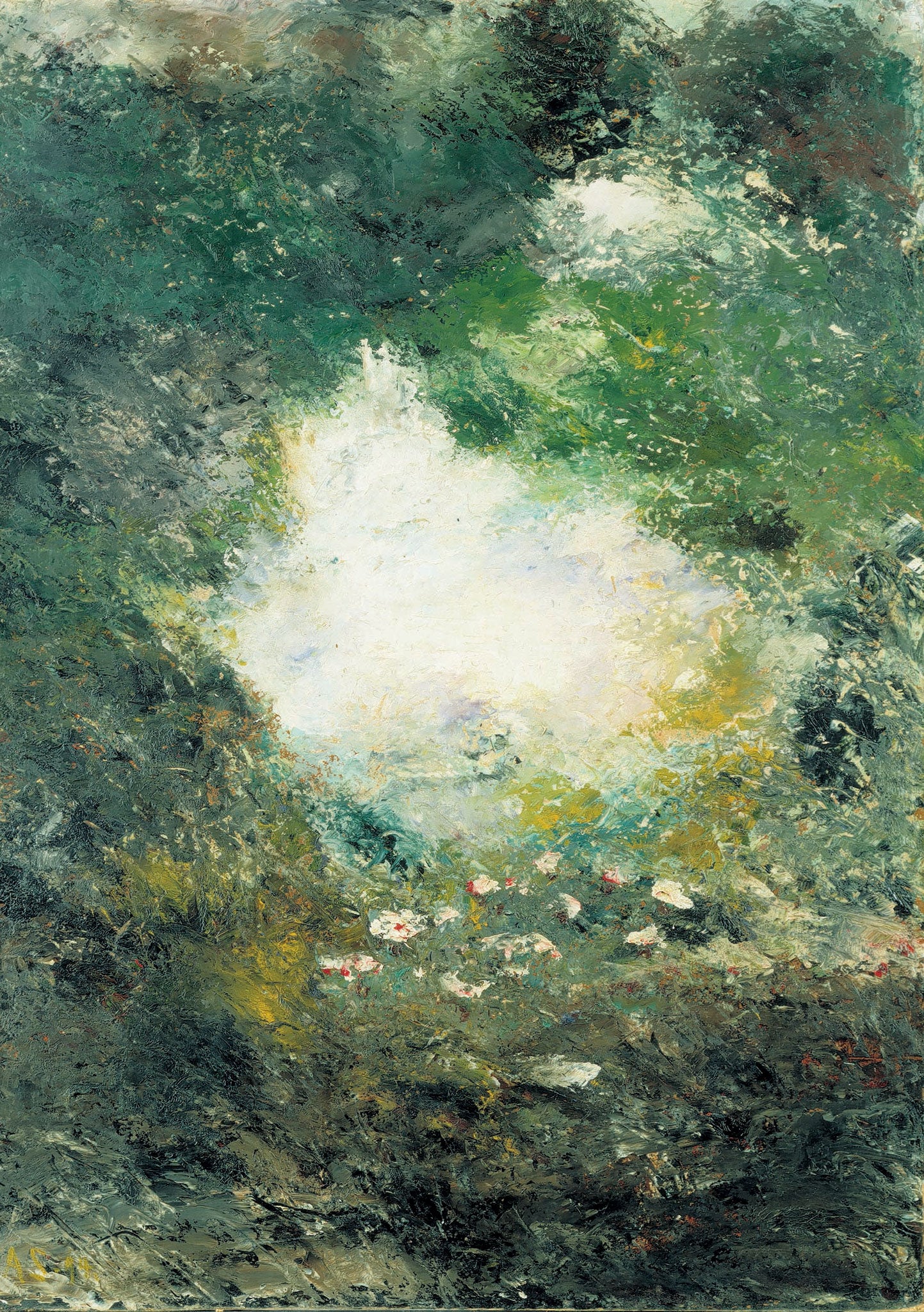Great Works: Wonderland, 1894, by August Strindberg
Nationalmuseum, Stockholm

There was a terrible, lifelong restlessness about August Strindberg. He was perpetually in conflict with Swedish society. In fact, his condition seemed to be that of a natural and habitual transgressor. Best known for his plays, he was also a memoirist, essayist, novelist, poet, actor, and a ceaseless, amateurish dabbler in the sciences.
He was also a painter of real distinction, and as with all his other endeavours, his paintings feel, always, not only like fragments ripped out of the pages of his own autobiography – do not his lonely trees on the shoreline generally feel like portraits of their painter in his habitual mood of testy, haunted isolation? – but also ways of fighting his way through to the essential truth of things.
In 1894, he proclaimed in a letter to a friend that he had discovered a way of making art that would be both a mirror of the artist's mind and a genuine attempt to frame a window on a common world. It would be both esoteric and exoteric, inward-looking and outward-looking. The word he uses to describe this new art is "double-bottomed", which means that it will comprehend an aspect that everyone can make out, and an esoteric one reserved for the painter and "the chosen few". This way of making would also involve chance, he announced, decades before the Surrealists embraced the idea of automatic writing and the aleatory impulse as things peculiar to themselves.
And so what we have here is a form of landscape, and it might even be described as idealised landscape, an Arcadian scene, though a thoroughly unspecific and indefinite one. Not indefinite, though, in the way that one of Turner's late scenes of Venice were indefinite. In spite of the fact that Turner's Venice of the 1840s is dissolving away into nothingness, we still feel the pull of the actuality in which it is ultimately grounded. We also understand that part of Turner's intention in painting in this way may have been to record the terrible, oppressive melancholia of a place in terminal decline from its centuries of greatness and political potency.
With Strindberg, the matter is quite different. There is a less sure underpinning of reality here. This is both place and idea of place, landscape as actuality and landscape as symbolic representation. It is, as he would have known, delicately poised between an inner world of pure fantasy and an outer world. It is the very centre of the painting to which our eyes are most readily drawn.
It sucks us in, this hole with its promise of light, and all that such a light might mean, this blaze of illumination at its centre, which appears to be opening out to us, as if in invitation. The greennesses that encircle it – they look in part like wind-whipped foliage – help to transform the hole itself into a maelstrom.
Much is deeply troubling here, though, because our ability to read the scene is very limited. Are we looking out from a rocky forest floor? Are we, having climbed this far – the lower half of the painting could be rocks up which we have been clambering – about to emerge in full face of a glorious view of... what? The sea? The sky? And what are these flowers that seem to be positively urging us to identify them? One critic of this painting has called them mallow worts, wallowing in a pool of stagnant water.
Is that accurate though? Might it not be truer to argue that this garlanding or strewing of white and red flowers in the path of the climber is yet another fantastical touch in a painting whose shape looks like a whirling green wreath offered up to the ever elusive gods of the spirit realms?
About the artist: August Strindberg (1849-1912)
In addition to his achievements in the other arts, the Swede August Strindberg (1849-1912) also made paintings, drawings and photographs. Post-Impressionist in inspiration and restlessly eclectic, his work also has links with Symbolism, and his ideas look forward to Dadaism and Surrealism. His favourite motifs – a tree, a lighthouse, a turbulent shoreline – often look lonely and beleaguered. Somewhat akin, therefore, to Strindberg himself.
Join our commenting forum
Join thought-provoking conversations, follow other Independent readers and see their replies
Comments
Bookmark popover
Removed from bookmarks